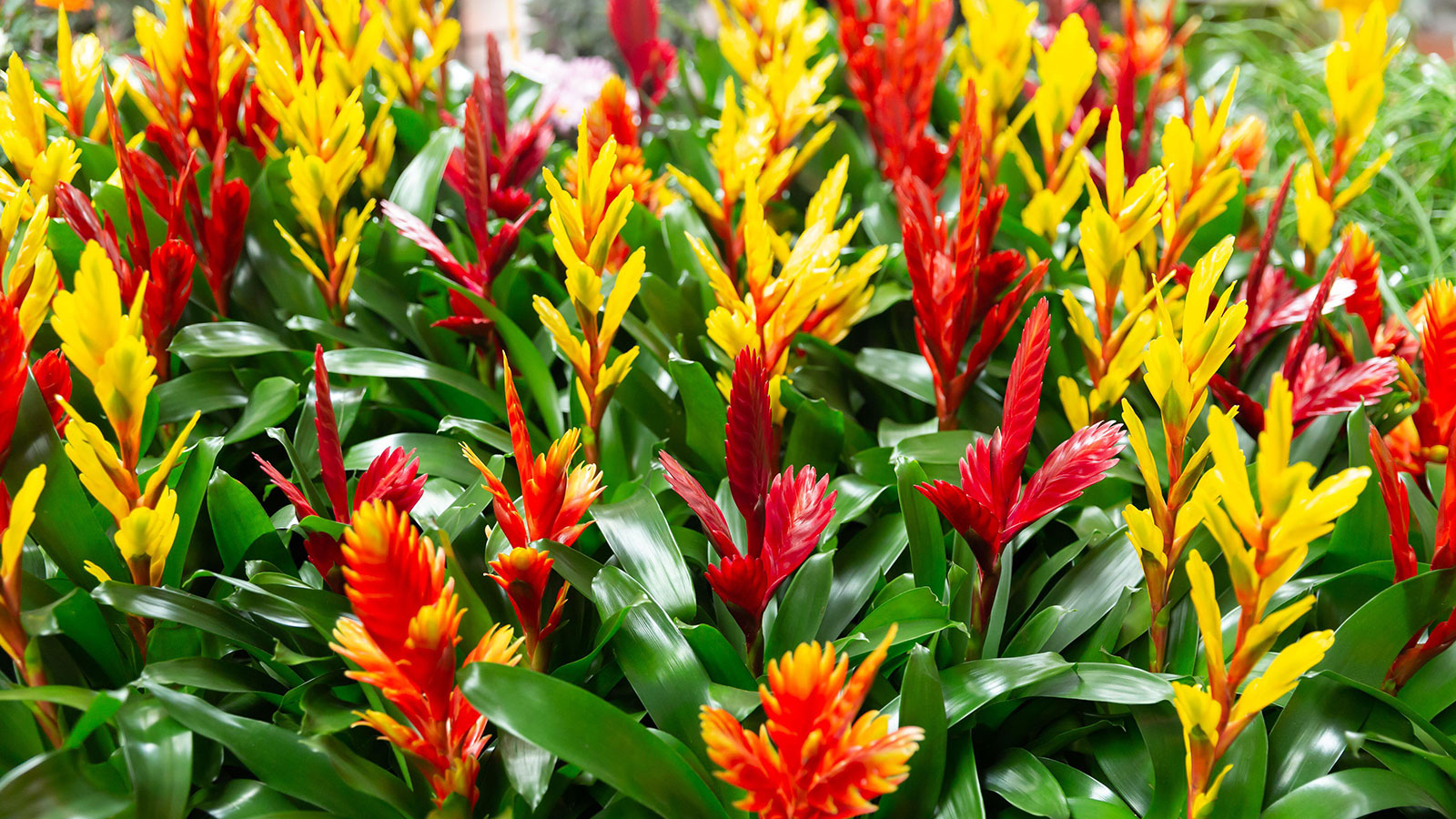
Delivering a touch of the tropics to your home, bromeliads are guaranteed to brighten up a dull day with their colorful flowers and lush foliage. Native to the rainforests of Central and South America, these beautiful plants include more than 3,000 species but only a few are grown as houseplants.
Many of these have striped or patterned foliage, as well as brightly colored flowerheads made up of large petal-like bracts and small flowers that last for many months.
Most bromeliad indoor plants are epiphytes and grow on trees in the wild, catching the rainwater they need in cleverly designed leafy cups that form in the center of the plants. Airplants (Tillandsia) are also a type of bromeliad, and absorb moisture from the air rather than a cup, but their care is slightly different from the others outlined here.
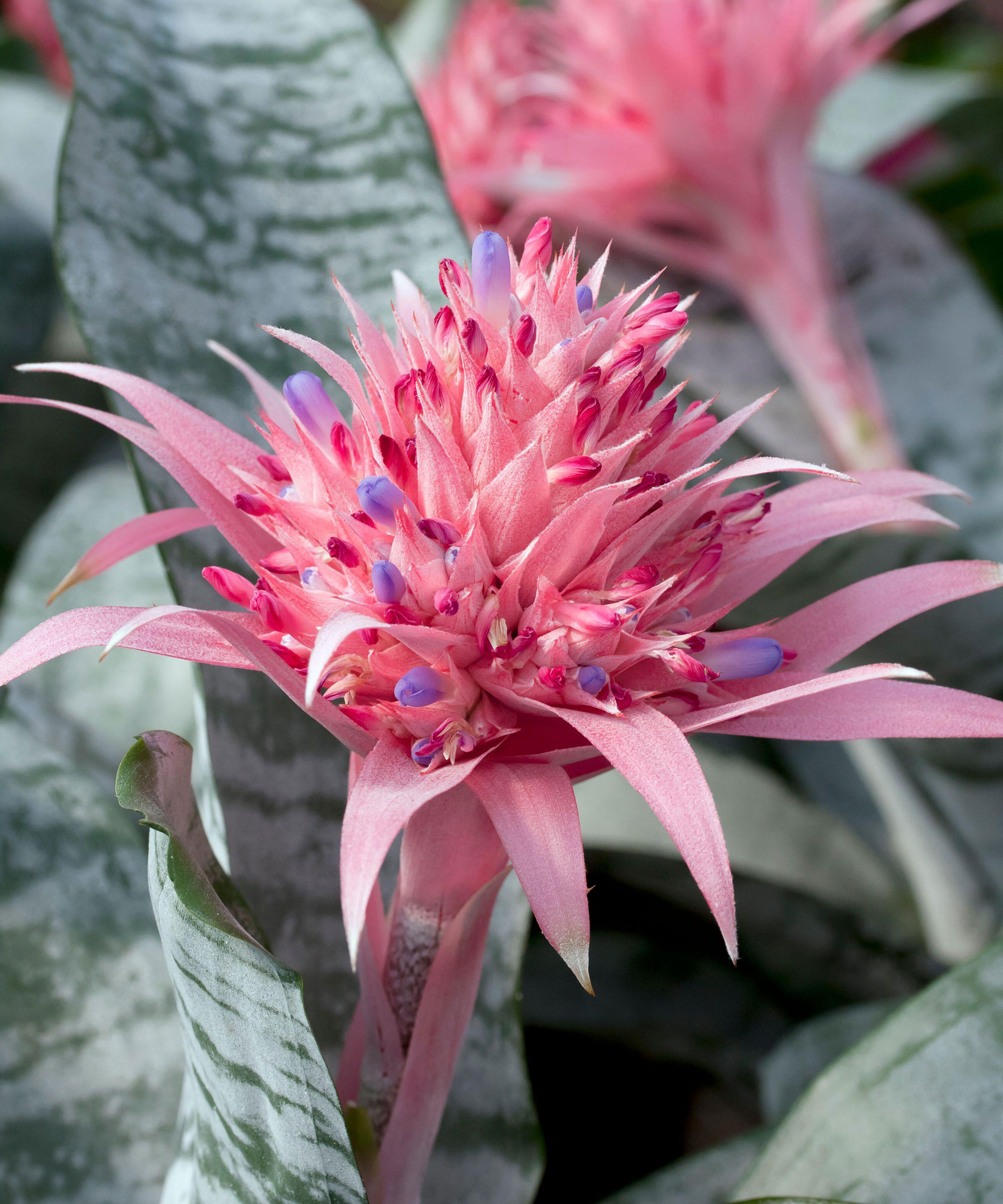
Types of bromeliad houseplants
- Urn plants (Aechmea) are grown for their silver and green, spiny-edge foliage and vibrant flowers that sport pink, red, orange or yellow bracts.
- The flaming sword (Vriesea splendens), available from The Sill, is another popular plant, loved for its dark green, often striped, foliage and scarlet or yellow bracts with small yellow flowers.
- The scarlet star (Guzmania), available from The Sill, has bright red flowers and glossy green foliage.
- Others to try include the blushing bromeliad (Neoregelia), with its red or pink center and striped or spotted foliage, and the zebra plant (Cryptanthus zonatus), named after its spreading dark burgundy and silvery-white striped leaves.
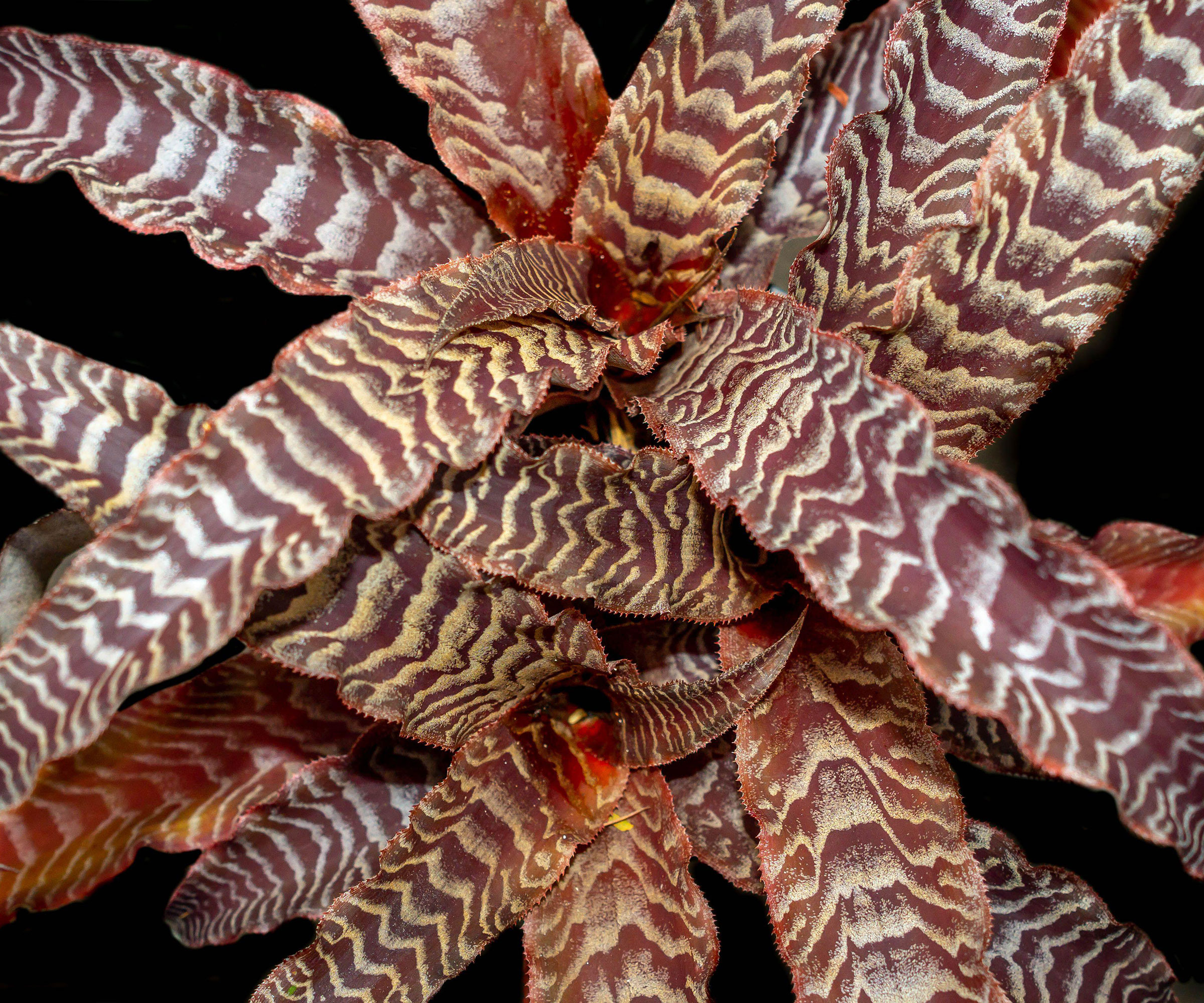
Where to place bromeliad plants
'Bromeliads prefer bright indirect light or direct sunlight,' says Paris Lalicata, plant education and community engagement associate for The Sill, which has a national network of plant stores and an online shop. 'So close to an east-, west- or south-facing window will work for most of them. Some, such as the spikiest varieties of blushing bromeliad (Neoregelia) and many urn plants (Aechmea) that produce rigid leaves behave like succulents and can tolerate more direct light than those with softer, green leaves, including scarlet stars (Guzmania).' They also like warmth year-round, so avoid drafty areas or cold rooms.
These tropical indoor plants love a humid atmosphere and The Urban Earth Nursery team suggest growing them as a kitchen plant or bathroom plant (as long as the room is bright), as humidity levels tend to be higher. Alternatively, if your home is very dry, you can buy a humidifier, such as this vase humidifier from Amazon. However, some Vriesea and Aechmea tolerate lower levels of humidity so try experimenting with yours to see what conditions suit them best.
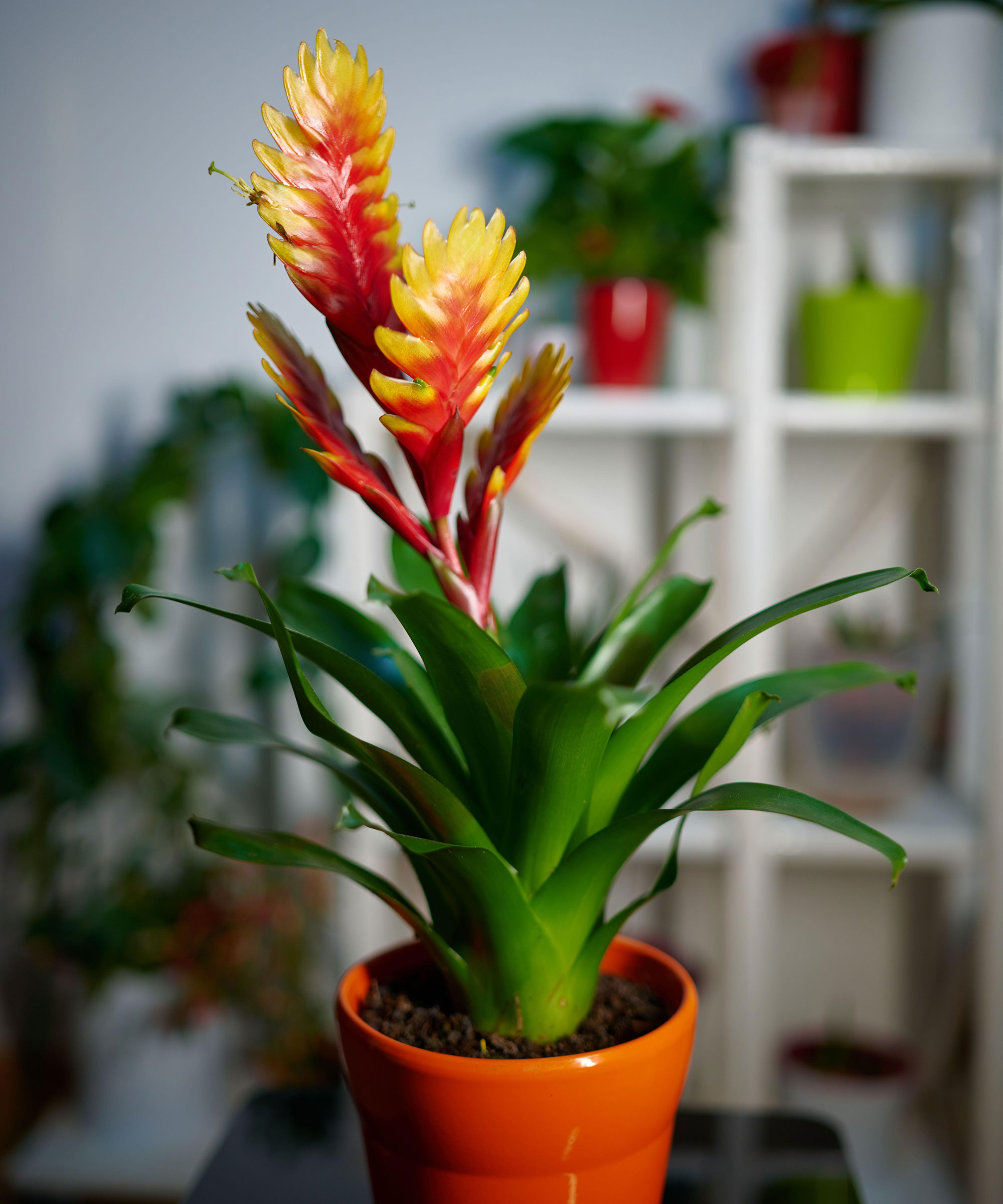
How to water and feed bromeliads
Lexi at the Urban Earth Nursery, an all-women-owned garden center and online shop in Fremont, near Seattle, explains that watering plants like bromeliads is a two-step process. Always ensure your plant is in a pot with drainage holes in the base, since bromeliads do not like waterlogged soil, and ideally water with rainwater, or leave tap water overnight before applying it.
'When the top inch or two of soil is dry to the touch, use a watering can with a long thin spout to water the soil,' says Lexi. 'You should see water running through the drainage holes as a cue that enough water has been provided. (If no water runs through the drainage hole, add more water to the soil). If your plant is sitting on a saucer, discard any excess water in it to avoid soggy soil.
Alternatively, you can try ‘bottom watering’ your bromeliad by letting it soak in a tray full of water for an hour or two. Remove your plant from the tray once the top of the soil feels moist. You can use a similar approach for watering air plants too.
'The leafy cup or well in the center of a bromeliad should always have some water in it, too, just as it would in a rainforest. So if you notice your bromeliad's rosette is empty before the top inch or two of soil dries out, you can add water to the cup without watering the soil.'
'To keep the water fresh and avoid bacterial growth or salt build-up, ideally change the water every few days,' adds Paris. To do this, carefully tip the plant up over a sink to pour it out and then replenish the cup with fresh water.
Paris also says that bromeliads generally don’t require fertilizing to thrive, but they can benefit from light feeding in the spring and summer months to help boost growth. 'Therefore, you can fertilize once a month with any standard houseplant fertilizer, following the instructions on the packaging,' she advises. This Espoma concentrated indoor plant food from Amazon is suitable for a wide range of houseplants. Do not feed your plants in winter.
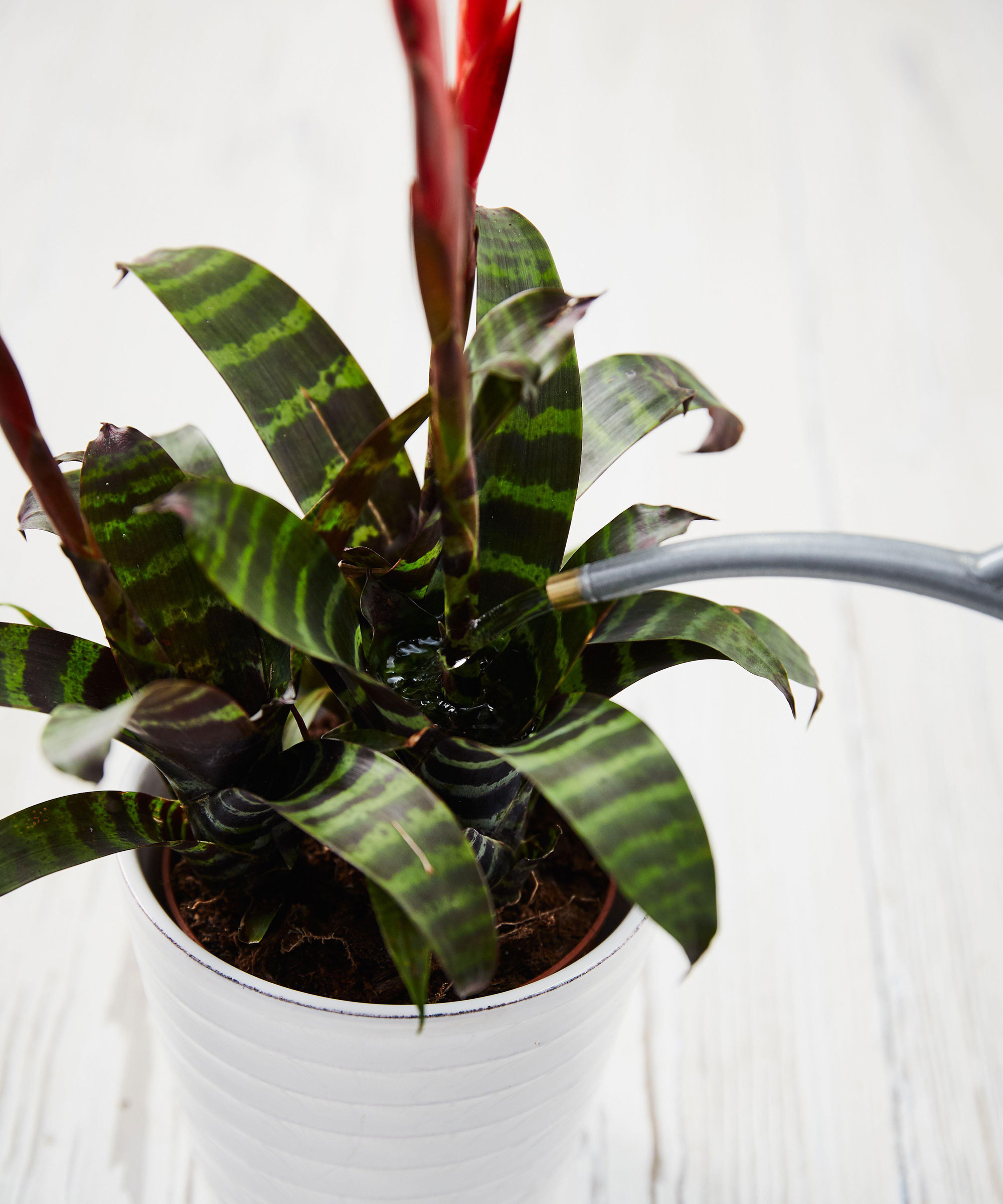
Key problems and how to solve them
While bromeliads rarely succumb to pests and diseases, overwatering your plants can lead to root and crown rot, resulting in their early demise. Overwatering orchids can cause similar problems.
To avoid this, keep your plant in a pot with drainage holes in the base, water it over a sink and leave it to drain before returning it to a waterproof container. And remember not to water until the top inch or two of soil feels dry.
Pests that may attack your bromeliads include mealybugs and scale insects, both of which suck the sap from plants’ stems and leaves and cause distorted growth.
Mealybugs look like woodlice and secrete a fluffy white coating which they hide under, while scale have a shell-like appearance. Check the undersides of leaves for their eggs, too. If you find these pests on one or two leaves, the simplest solution is to wipe off the eggs and insects or, if they remain stubbornly attached to just a few leaves, remove the affected parts. For a heavier infestation, try an insecticidal soap or organic sprays based on natural pyrethrum or plant oils.
FAQs
Do bromeliads only flower once?
The team at Urban Earth Nursery explain that bromeliads do indeed only flower once during their lifetime. 'The good news is the flowers can bloom for up to six months,' says Lexi, one of the experts at the nursery. 'The bad news is that bromeliads then begin a slow dying process after blooming, but this can take a whole year and, during this time, the plant's energy will be redirected into producing "pups" or offsprings around the base of the parent.'
What do you do with a bromeliad after it blooms?
Paris Lalicata, plant education and community engagement associate for The Sill says that plant parents can propagate bromeliads by potting up the pups around the mother to create new plants.
'Simply tip the plants out of their pot, shake the soil off from around the roots and carefully separate the offsets from the mother, making sure each pup has some roots.' Avoid making any houseplant propagation mistakes by planting up the babies in small pots of fresh potting soil, inserting them at the same depth as they were in their original pot. Keep them in bright, warm area to grow on.
Most bromeliads live for three to five years until they flower and the blooms fade, but their ability to regenerate themselves by producing new plants means that you can enjoy them for as long as you wish to keep potting up these offsets and growing them on.






